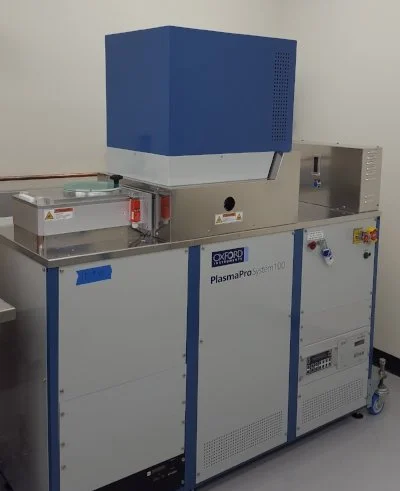OXFORD PLASMA PRO 100 COBRA Cl RIE
OPERATING INSTRUCTIONS |
GENERAL INFORMATION
Inductively Coupled Plasma (ICP) etching is a technique which uses a radio frequency (RF) energy coupled into a low pressure gas by an inductive coil mounted on the outside of a quartz window. This technique allows fabrication of high aspect ratio silicon features with vertical sidewalls; The Cobra ICP etch sources produce a high density of reactive species at relatively low pressure values. DC bias can be applied to the substrate to increase directionality of ions into the substrate.
The Cl-RIE uses Chlorine based chemistries to etch layers from the III-V groups (e.g. GaAs, AlN, GaN, InP), some ceramic compounds (e.g. Al2O3) and metals (e.g. Pt). Metals are allowed in the Cl-RIE chambers and some F-based etch chemistries are available to use as well. Available gases: BCl3, Cl2, H2, O2, Ar, CF4, and CH4.
For recipes and materials specific etch rate information you can view our process development file.
CONTACT INFORMATION
For additional information about the Oxford PlasmaPro 100 Cobra Cl RIE, please contact the clean room staff at: cniCR@columbia.edu.

